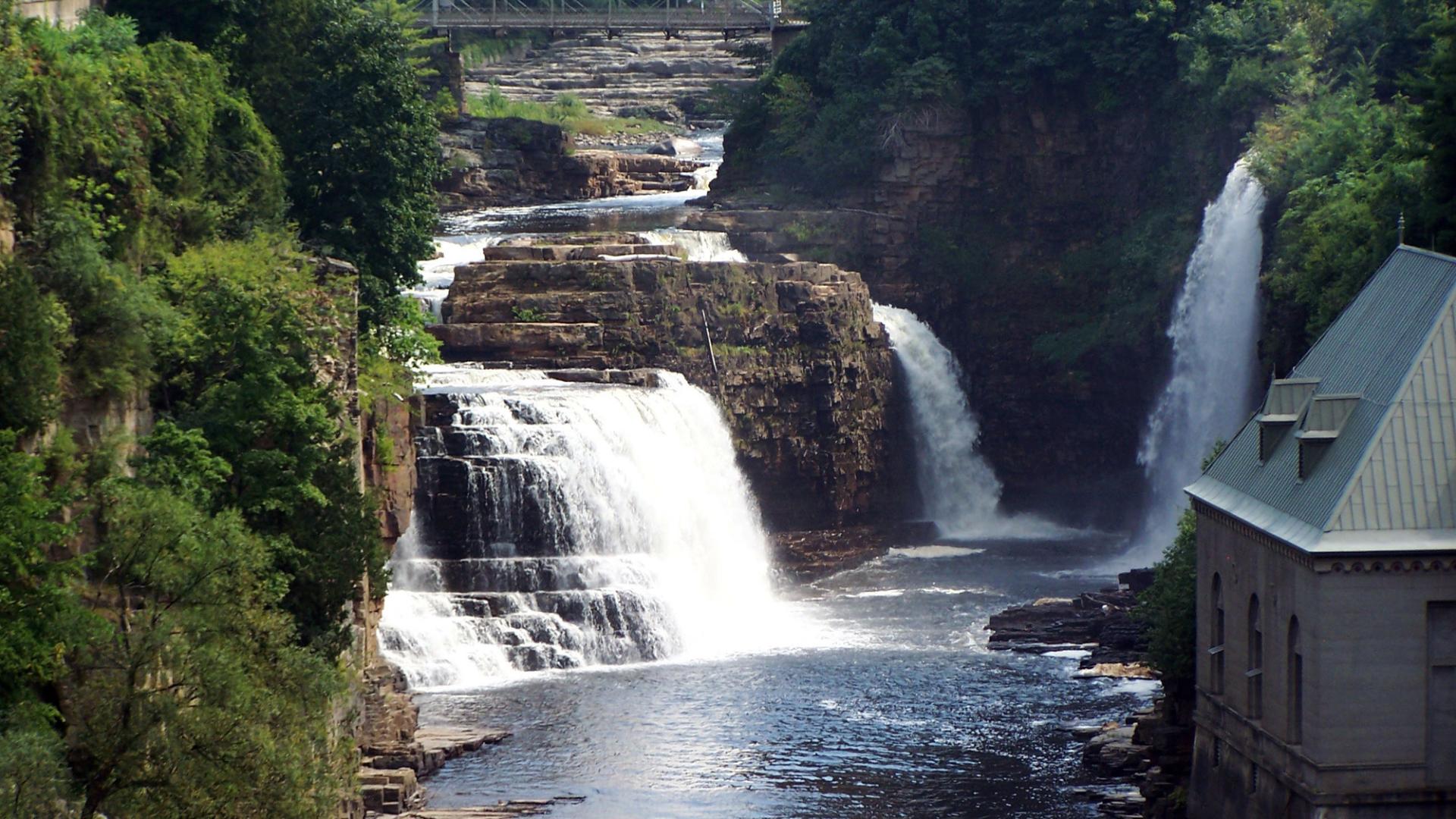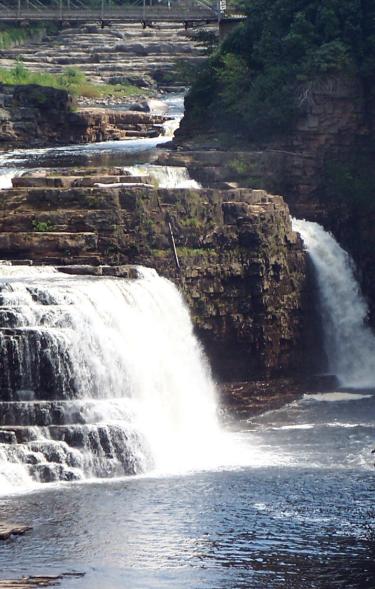It begins with mother nature
If you have ever have stood on a viewing platform at Niagara Falls, you have an appreciation for the power of falling water. It can rattle you right to the core, yet it is mesmerizing. Spring is the time to witness this power throughout the Lake Champlain Region. Melting snow and spring rains swell our streams, creeks, and rivers. Regional waterfalls enter their peak season and contribute to our impressive scenic beauty and close connection to natural forces.
The mighty La Chute River
Every spring in the town of Ticonderoga, the La Chute River puts on a spectacular performance. This river connects Lake George to Lake Champlain. Its vertical drop is comparable to that of Niagara Falls — 220 feet — though that is stretched out over its 3-mile length. Nevertheless, its falls and rapids are quite significant, forceful, and entirely captivating. The La Chute River Walk Trail has plenty of spots for public viewing access; opportunities to observe the river's beauty and power. Access this interpretive trail at a variety of points within downtown Ticonderoga, but be certain to stop in to the Ticonderoga Heritage Museum for a greater appreciation of this marvelous river.
One would have to rewrite centuries of the town of Ticonderoga history if there was no La Chute River. Residents of the town recently celebrated the town’s 250th anniversary, with much gratitude and recognition of this powerful body of water. Early on, settlers in this region recognized an opportunity to capture the river’s falling force and make use of its endless power, particularly during the Industrial Age.
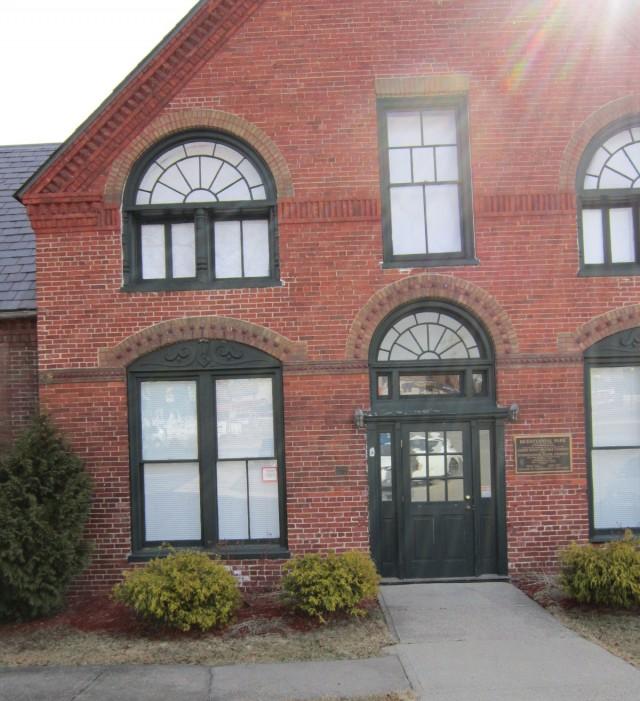
Ticonderoga Heritage Museum
Recognizing the natural force of swiftly flowing water is one thing, but how did they actually make use of it? I ventured to the Ticonderoga Heritage Museum to find that out. Inside is a tremendous exhibit on harnessing the power of flowing water. I began to understand why Ticonderoga is located where it is. After all, the town’s geography includes both Lake Champlain and Lake George shorelines. One might wonder why the downtown isn't located on one of these “blue highways” like the fort. It’s because of the La Chute River that the town developed where it is.
The Ticonderoga Heritage Museum is located right at the entrance to Bicentennial Park, along the La Chute River Walk Trail. It is also known as the 1888 building, the last remaining structure of the Ticonderoga Pulp and Paper Company, which later became a part of International Paper. This brick structure used to serve as the main office building with engineers on the second level, and accounting and payroll on the ground floor.
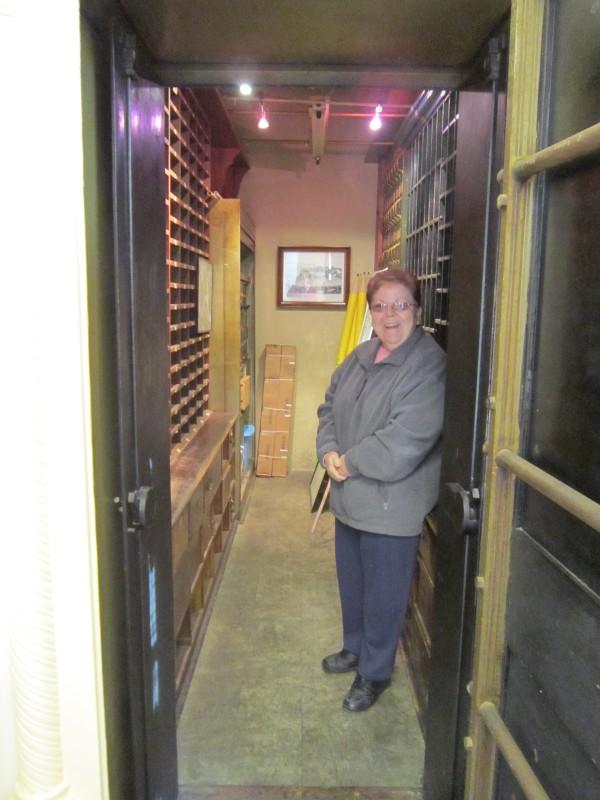
Hydro electric harnessed
Mary Curtis, Director of the Ticonderoga Heritage Museum, gave me a peek at the massive vault that housed the mill workers pay and records. Surrounding this 1888 building were factory complexes and a boat basin below the lower falls I can see out of the window. All of this took up much of what is Bicentennial Park in downtown Ticonderoga today. From the boat basin, barges and schooners could load and travel out the river to Lake Champlain. There a southerly connection to the Champlain Canal could take them anywhere. Location, location! It's the mighty LaChute that initially provided the power to run the machinery and then the access to Lake Champlain for shipments and supplies; very accommodating. Prior to paper making, the LaChute held a history for powering many other factories and industries along its banks.
I gain further appreciation and more knowledge of the history of Ticonderoga, particularly during the industrial revolution, from the museum’s Water Power Exhibit. Today we have the grid. We do take power for granted. We plug it in or flip a switch and are good to go. Today industry has numerous location options, but before there was access to readily available power, the banks of swift flowing streams, rivers and creeks were where manufacturing structures needed to locate.
Taking up two large rooms, scale models of the wide varieties of mills and factories that produced goods along this important river are replicated in amazing detail while a likeness of a piece of penstock hovers overhead. I see many examples of man- made devices to capture water power. There are scale models of rudimentary water wheels and more of later developments that harnessed the river’s forces.This exhibit explains water power in way that I, with no mechanical skills, can at least comprehend the basics. I learned penstocks directed the flow of water, governors controlled it, and turbines turned it into a force to run machinery.
The exhibit houses a huge governor available for close inspection and outside one can examine a large turbine. Consider purchasing the book “Once Upon The River”, written in 1983 by resident Denise Huestis and available here. It details the story of 19thCentury industrial development in the Town of Ticonderoga and will add an important layer to your knowledge of the history in this town.
Around a corner, I enter another exhibit room and am met with a huge over-scale model of the famous Ticonderoga pencil. I know that this is what some people immediately think of when they hear the town’s name. Mary informed me, that the pencils were not actually manufactured here, but rather in New Jersey! It was the graphite that came from this area; hence the name. The graphite was processed for shipment in a factory directly across the river from this museum and the initial prototypes of the Ticonderoga pencil may have been made there.
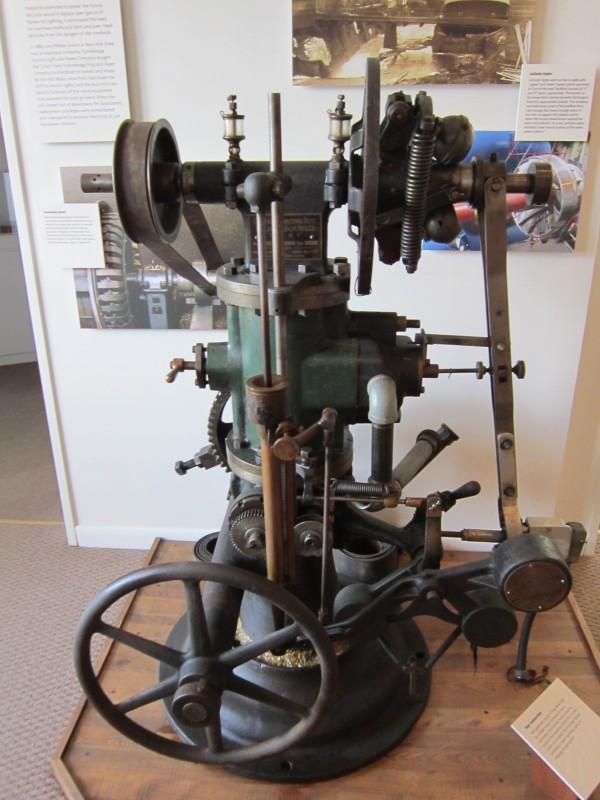
Immerse yourself in the history of Lake Champlain
A visit to the Ticonderoga Heritage Museum is a must do when in the area. Keeping with local culture and tradition, you can become a paper maker during any visit and go home with a DIY recipe for future projects. In addition, you will come away with a different perspective and greater appreciation of any flowing body of water. As you tour our scenic countryside and encounter its small hamlets and historic built up areas, you may find yourself looking for a body of flowing water to explain the reason for early development at this particular site.
The museum is open to the public from 10:00 until 4:00 on weekends Memorial Day to July 4th. From July 4th it is open daily until Labor Day at which time it returns to weekends only until Columbus Day. Look for their creative Children’s Workshops in July and August on Wednesdays and Fridays. These workshops are designed to inspire the imagination while implanting an appreciation of area culture and industrial heritage. Contact the museum at 585-2696.
